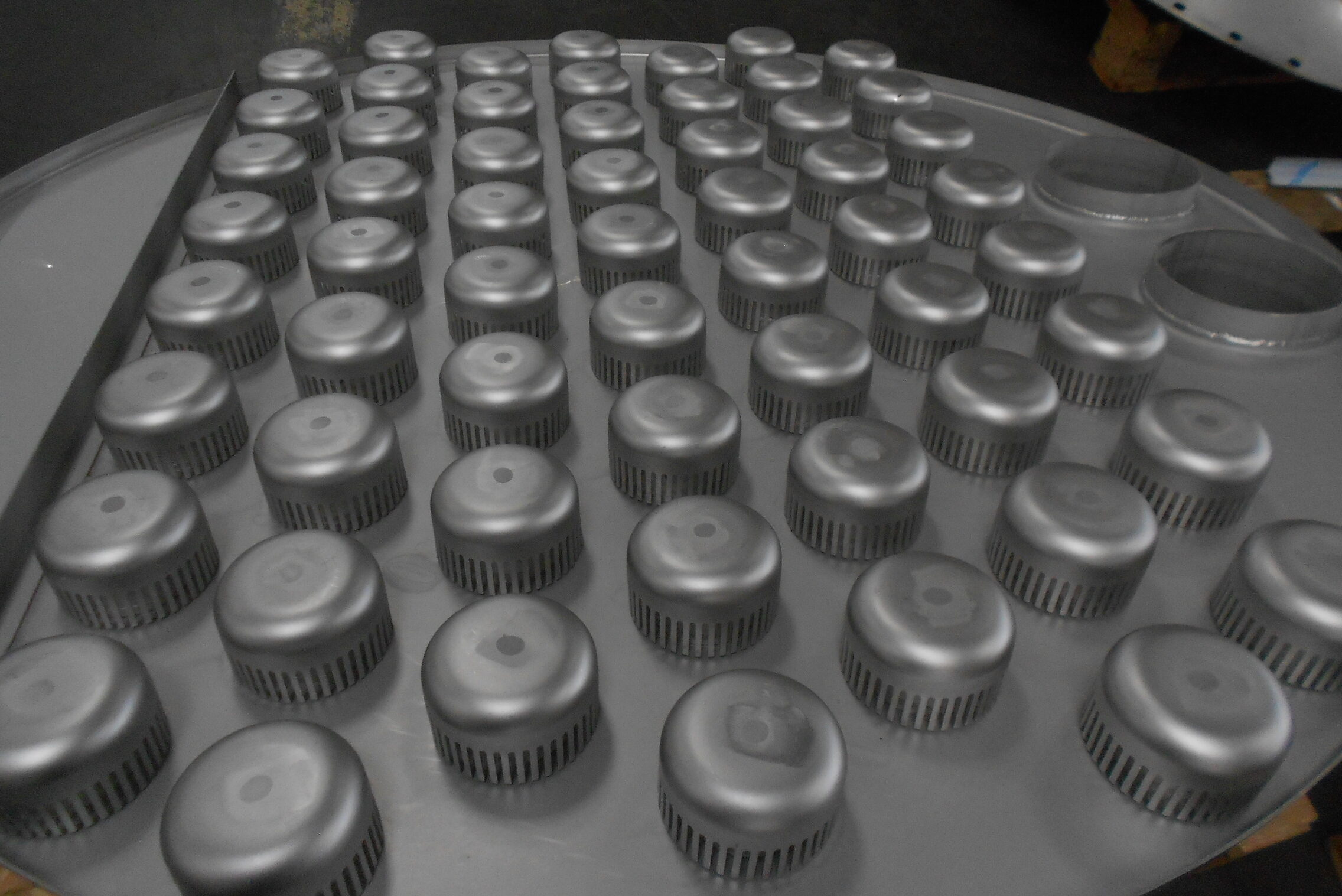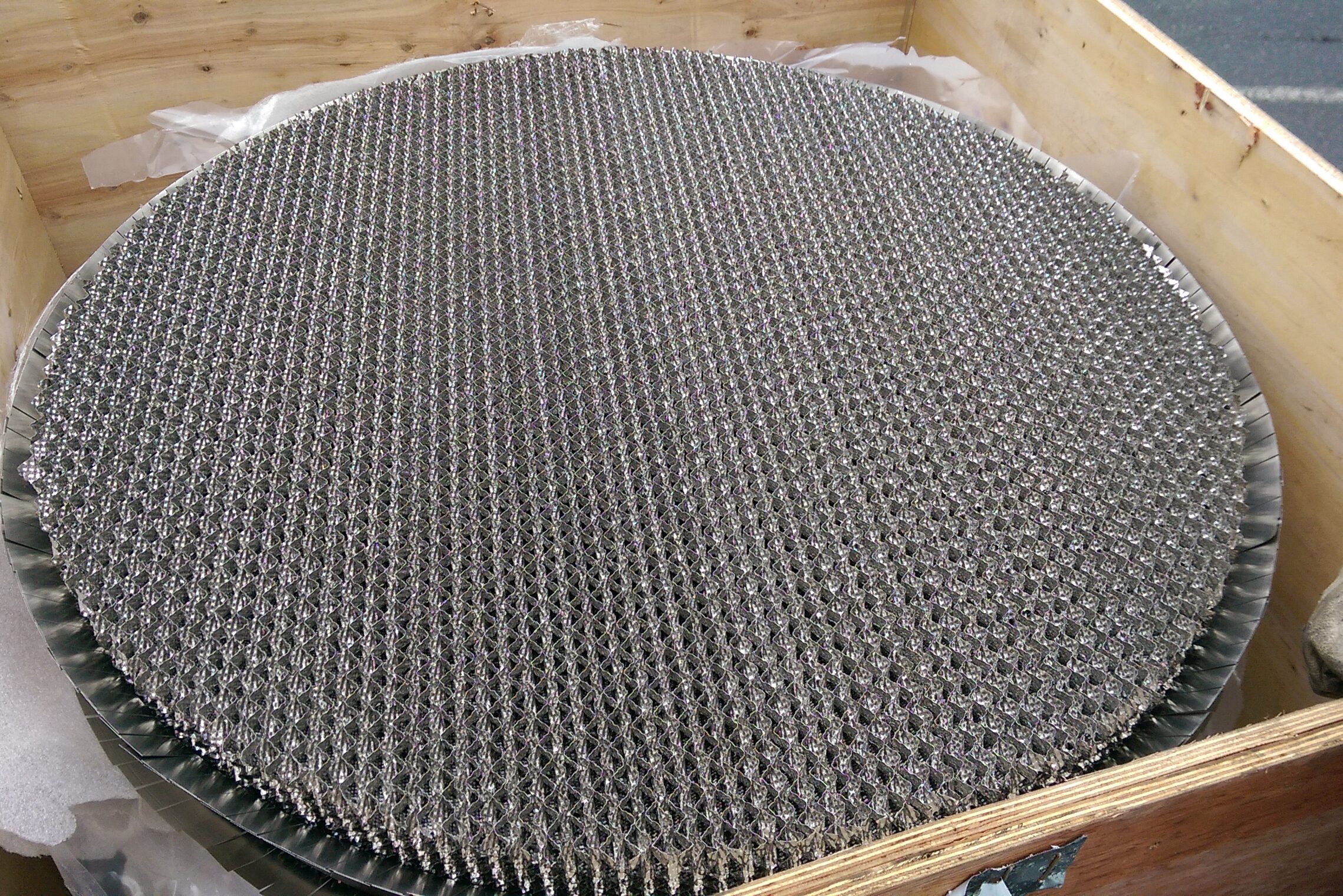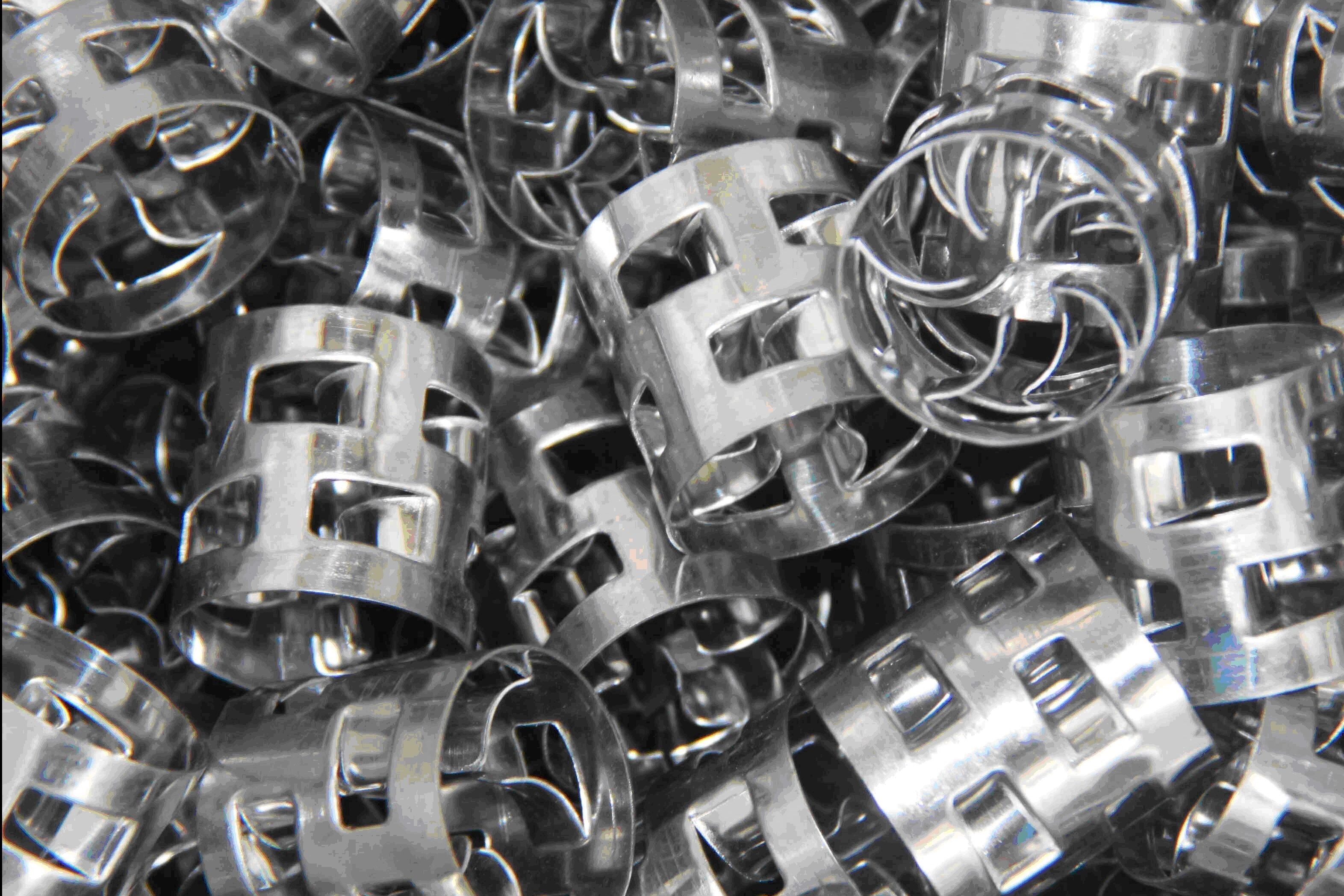Internal and packing of columns
Internals of columns, a expertise Labbe Process Equipment :
After 70 years experience in design and manufacturing of internals of columns. Labbe is your best partner to find the optimum solution for your application. We are specialised in mass transfer technology and offers you distllation, absorption and concentration columns with internals.
Labbe offers you 3 types of internals : trays, random packing and structured packing
Les internes de colonne
Les internes de colonne sont des dispositifs permettant d’assurer un contact intime entre le gaz et le liquide de manière à approcher au mieux l’équilibre de composition. Labbe est en mesure de vous proposer trois types d’internes de colonne: les plateaux, le garnissage structuré et le garnissage vrac. Le choix d’internes de colonne dépend de critères de pertes de charges, encombrement, efficacité, débit, encrassement, flexibilité, coût.
Les principaux critères de choix entre du garnissage ou des plateaux sont :
3 types of internals
Labbe offers you 3 types of internals : trays, random packing and structured packing

Trays

Structured packing

random packing
Trays
Trays are the principle elements of a distillation column, the vapour bubbles generated by the down-flowing liquid and the up-flowing vapour creates an interface which allows a mass transfer to occur between the two phases.
A tray consists of several parts: the bubbling area, the weir and the downcomer.
The bubbling area define the tray type and its operation. The weir fixes the liquid height and the pressure drop, the downcomer allows the transit of the liquid towards the lower plate and forces the steam through the bubbling area.
Labbe offers sieve trays, valve trays with fixed or moving valves and bubble-cap trays, made of stainless steel or nickel alloys, single or multiple pass. These trays are selected according to the specifications of your column: liquid and vapor flow rates, variations of flows (turndown ratio), allowable pressure drop, operating pressure…
The height and type of the weir as well as the inclination and the length of the downcomer can be adjusted to accommodate particular distillation conditions (viscous liquid, variable flow rates, difficult vapor-liquid disengagement…), to increase liquid-vapor exchanges and to lower the pressure drop.
Structured packing
Structured packing is a type of packing proposed by Labbe known for its efficiency and low pressure drop. It allows to decrease the size of columns compared to other distillation column internals. This packing consists of a set of corrugated sheets in the form of honeycombs.
The structured packings are listed according to their material (metallic, plastic), their specific surface (expressed in m²/m³) and the angle of their undulations relative to the vertical line (30° or 45°).
The materials used are metal (stainless steel, aluminum, Hastelloy, Inconel …) or plastic (PS, PPH, HDPE, PVC, PVDF …).
Structured packing proposed by Labbe ensures a uniform distribution of the ascending vapor phase and of the descending liquid phase, as well as an optimal contactfor the mass transfer. This packing has a lower flow resistance and reduced pressure drops than trays or random packing.
The efficiency of a structured packing provided by Labbe is assessed in number of theoretical plates per meter of packing (HEPT) and pressure drop per meter of packing (specific pressure drop). These values depend on various parameters such as the F-factor (F = v. (ρ) ^1/2), the operating pressure and the nature of the fluids.
The structured packings are in the form of blocks, with an average height of 270 mm, made of corrugated plates assembled back to back.
The presence of a liquid distributor is required at the top of the column to ensure a good packing efficiency. Redistributors are needed when the total packing height is greater than 4.5 meters. A support grid is also required to support the packing. A hold-down grid can be installed to prevent the packing from moving.
Random packing
Random packing consist of elements with complex shapes randomly arranged (hence their name) inside the column. The mass transfer between the vapour and the liquid occurs at the surface of each element.
There are many shapes and materials available for random packings. They are characterised by their specific surface expressed in m2/m3 . Their void fraction also called porosity (in %) and their bulk density (in kg/m3).
Each type of random packing comes in available in different sizes. A smaller size increases the specific surface and thus the separation efficiency as well as the bulk density. In return the pressure drop is increased too.
Like the structured packing, random packing is laid on a specific support grid. Also, is held in place by hold-down grids.
Distributors and collectors are also needed to ensure an even flow distribution across all the packing.



